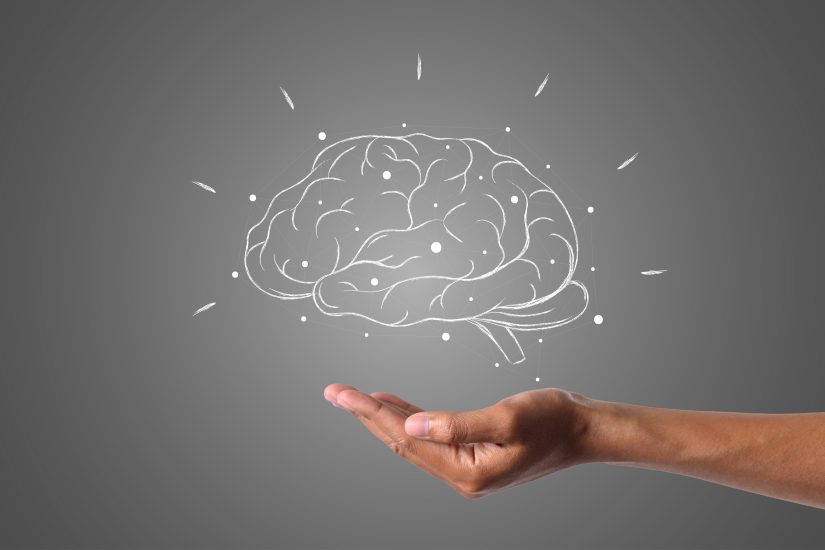- October 12, 2024
- by Shalini Murmu
- Mental Health
Self-harm frequently carries a stigma that fosters misunderstandings about those who are involved in it. As indicated by the National Institute of Mental Health (NIMH), roughly 1 out of 5 teens admit to self-harming at different points in their lives. This concerning statistic underscores that self-harm is not merely an individual issue but a prevalent concern that impacts numerous people. Yet, despite these figures, many misconceptions remain, creating a skewed view of self-harm and its root causes.
Common Misconceptions About Self-Harm Behaviors
A widespread misconception is that self-harm is simply a cry for attention or a manipulative act. This misunderstanding can exacerbate the isolation felt by those who self-harm, hindering their ability to seek the mental health support they urgently require. The truth is significantly more nuanced; self-harm often serves as a coping strategy for intense emotional distress rather than an explicit plea for help. Many self-harm in silence, grappling with feelings of shame and fear regarding their behavior.
It’s a widespread belief that self-harming behavior is limited to adolescents or those with significant psychological conditions. It is true that young people tend to engage more in self-harming actions, yet individuals from various age groups and backgrounds can experience this struggle too. It is essential to acknowledge the wider context of mental health issues, including manic depression and its connection to self-harm, rather than confining our understanding to stereotypes.

1.Emotional Being Of Self-Harm
i. What Drives Self-Harm?
To truly understand self-harm, it’s important to know the emotional terrain that often fuels these actions. At the center of self-harm is significant emotional turmoil. Turmoil that may come from diverse causes, like grief, trauma, isolation, and humiliation. For many, self-harm acts as a release for emotions that appear insufferable.
Grief constitutes a deeply impactful emotional experience that can present itself in numerous forms. The loss of someone close or a significant life transition can create an emptiness, prompting one to seek relief through self-harm. Likewise, those who have gone through a traumatic event may turn to self-harming behaviors as a means of dealing with memories that feel overpowering and unmanageable.
Isolation serves as another significant motivator. People who feel estranged from their social networks may engage in self-harm as a method to externalize their internal battles. They might perceive themselves as stuck in a loop of despair, and inflicting physical pain can temporarily alleviate their emotional strain.
Shame can be debilitating, often causing people to feel unworthy or undeserving of assistance. This internal narrative can render seeking any mental health resource, insurmountable. Understanding these diverse forms of emotional suffering can cultivate empathy for those who engage in self-harm, allowing friends and family to provide more caring and understanding responses.
ii. Emotional Numbing and Self-Harm
For many, self-harm evolves into a mechanism to counteract emotional numbness, a condition where feelings become muted, hindering the ability to connect with oneself or others. Individuals who undergo this numbness might feel ensnared in a haze, unable to articulate or comprehend their emotions. In this scenario, self-harm can paradoxically evoke a sense of being alive.
When a person inflicts harm upon themselves, they may momentarily pierce through the emotional fog, encountering sensations that remind them of their existence. This can create a distressing cycle: self-harm offers a fleeting escape from numbness, reinforcing the behavior as a misdirected coping mechanism.
Identifying these patterns is vital for both individuals and their loved ones. When you or someone within your circle is portraying signs of depression or self-harm, it becomes crucial to find help. Whether it’s a mental health professional, a mental health helpline, or one of the numerous dual diagnosis treatment centers, support is accessible. Seeking assistance is the initial step towards healing, and comprehending the emotional distress underlying self-harm can pave the way for a more compassionate and enlightened approach to recovery.
Schedule an appointment to talk to experts now.
2. Underlying Psychological Factors Behind Self-Harm
When discussing self-harm, it is crucial to explore the psychological elements that frequently accompany this behavior. Those who engage in self-harm grapple with intricate mental health disorders. It is vital to recognize that self-harm is not merely an act of desperation but often reveals deeper emotional conflicts.
i. Mental Health Conditions and Self-Harm
One of the most prevalent mental health disorders linked to self-harm is depression. People experiencing depressive signs may encounter a crushing sense of futility, pushing them to seek relief in self-destructive actions. For some, inflicting bodily pain may provide a temporary distraction from their emotional distress, offering a brief illusion of control in a world that seems chaotic and unmanageable.
Anxiety is another disorder intricately associated with self-harm. Those who battle anxiety frequently endure intense feelings of apprehension and dread, which can be profoundly debilitating. If these feelings stay unresolved, they might compel people to inflict harm on themselves as a method of dealing with the intense waves of fear and worry. In this context, self-harm can act as a misguided effort to reclaim a sense of agency over their emotional experiences.
Moreover, those identified with manic depression, frequently called bipolar disorder, can turn to self-harm in their depressive states. The severe emotional fluctuations characteristic of this condition can hinder individuals from effectively managing their feelings. Recognizing these connections allows us to approach self-harm with enhanced compassion and understanding.
ii. Influence of Personality Disorders on Self-Harming Behaviors
Personality disorders can significantly influence self-harming behaviors. Those diagnosed with borderline personality disorder (BPD) regularly deal with extreme emotional dysregulation, an acute fear of abandonment, and a shifting self-image. These struggles might lead them to inflict harm upon themselves as a way to communicate their deep suffering or as a strategy to deal with sensations of void and loneliness.
In addition, individuals displaying avoidant or dependent personality features could resort to self-inflicted harm to handle profound feelings of unworthiness or the fear of being spurned. This emphasizes the necessity of addressing personality disorders within mental health treatment. If you or a person you know are struggling with these conditions, look for a “mental health therapist near me”. It can be an important measure in the journey towards recovery.
iii. Effects of Childhood Trauma and Neglect
One of the most significant factors influencing self-harming behaviors often stems from childhood experiences. The scars left by childhood trauma, which may involve physical, emotional, or sexual abuse, can persistently influence a person’s mental landscape. People also resort to self-harm with a background filled with trauma, which triggers feelings of insignificance, resentment, and self-disdain.
Neglect can be just as harmful. When children are raised in environments where their emotional and physical needs remain unmet, they may struggle to develop healthy coping strategies. As adults, these individuals may turn to self-harm as a misguided attempt to express or release emotions that they were never taught to process in a healthy manner.
iv. How Early Experiences Shape Coping Mechanisms
The coping mechanisms established during childhood often persist into adulthood. If a young child recognizes that distress, whether it be physical or mental, is the singular approach to conveying their emotions, this habit may extend into their future life. As they grow, self-harm may become their automatic reaction to stress, anxiety, or sadness.
Understanding how early experiences influence these behaviors is vital for understanding the nature of self-harm. It highlights the necessity for early intervention and mental health services.
3. Social Influences and Stigma

Societal views and misconceptions surrounding self-harm frequently obstruct individuals from obtaining the assistance they require.
Feelings of loneliness and isolation can worsen one’s emotional state. When individuals find themselves feeling alienated from peers, relatives, or their neighborhood, they may turn to self-harm to cope with the heavy sensation of emptiness. This seclusion can create a detrimental cycle: the more someone engages in self-harm, the more they might retreat from social interactions, further amplifying their sense of loneliness.
Studies indicate that social support serves as a vital protective element against self-harming tendencies. In contrast, a deficiency in supportive relationships can heighten susceptibility to mental health challenges.
Humans are naturally social creatures; we flourish on connection and a sense of belonging. If this yearning stays unfulfilled, it may lead to sensations of hopelessness. For those who self-harm, the lack of significant relationships can exacerbate their emotional difficulties. They may feel alienated or believe that no one comprehends their anguish, which can reinforce self-destructive actions.
The desire for connection can reveal itself in various forms, from pursuing friendships to yearning for empathy from family members. It is vital to acknowledge that cultivating a support network can greatly influence recovery.
4. Overconsumption Of Substances
A significant concern that can arise is the inclination to resort to the overconsumption of substances as a way to manage intense emotions. This transition can trap individuals in a dangerous cycle of addiction, where their initial efforts to alleviate pain only exacerbate their difficulties and pull them deeper into a pit of danger and hopelessness. Substance use may appear to be a plausible solution, alcohol, drugs, or prescription medications can offer brief relief, temporarily distancing the individual from their emotional turmoil.
However, this initial mode of escape is deceptive. As the individual continues to engage in substance use, they may discover that the temporary relief is short-lived and comes with numerous adverse effects. The cycle becomes vicious: as emotional pain resurfaces, the individual might turn to extreme substance use as a coping strategy that can be extremely harmful. This dependence on substances can introduce an additional layer of addiction, further complicating their already difficult mental health situation.
i. Risky behaviors
As individuals increasingly rely on substances, they frequently partake in risky behaviors to maintain their habits. This may include:
- Reckless Spending: In order to support their addiction, individuals might turn to borrowing money, engaging in theft, or spending irresponsibly, resulting in financial instability and increased emotional turmoil.
- Unsafe Environments: The pursuit of substances often places individuals in perilous situations, such as associating with detrimental peer groups or visiting locations where illegal activities are commonplace. These settings can heighten the risk of violence or further substance misuse.
- Neglecting Health: Individuals may disregard their physical well-being, skipping meals, avoiding necessary medical attention, or failing to address existing health issues. This negligence can aggravate their mental health and further entrench them in the addiction cycle.
- Self-Harm as a Coping Mechanism: The relationship between substance use and self-harm can establish a cycle where each behavior reinforces the other. Following a binge or a particularly severe episode of substance use, feelings of guilt or shame can drive individuals back to self-harm as a coping mechanism, resulting in a perilous loop of pain and relief.
ii. Pathways to Healing
To break free from the patterns of self-harm and excessive substance use, it is essential to acknowledge the connection between these actions and confront the emotional pain that fuels them. Here are several pathways that can assist individuals in embarking on their recovery journey:
- Therapeutic Support: Seeking assistance from a mental health counselor or therapist can offer a secure environment for individuals to delve into their emotions and cultivate healthier coping strategies. Therapy can aid individuals in unpacking the feelings that lead to self-harm and substance misuse, steering them toward recovery.
- Support Networks: Establishing a support network is vital. Building relationships with others who have experienced related obstacles can enhance community spirit and diminish feelings of being alone. Support groups can offer motivation and accountability.
- Holistic Approaches: Incorporating mindfulness practices, physical activity, and creative expressions can serve as healthier options for coping with stress and emotional distress. These pursuits can enhance emotional regulation and foster resilience.
- Addressing Co-Occurring Disorders: For individuals grappling with addiction in conjunction with self-harm, dual diagnosis treatment centers can deliver comprehensive care that tackles both mental health issues and substance use disorders at the same time.
- Utilizing Resources: Reaching out to mental health resources or helplines can offer prompt support and direction. These resources can assist individuals in navigating their path toward recovery and healing.
Need help for someone close going through mental health conditions? Get in touch with our experts at NABHS. We’ll guide you through every step of the way to your mental health recovery journey. You can make all the difference by reaching out now!
















